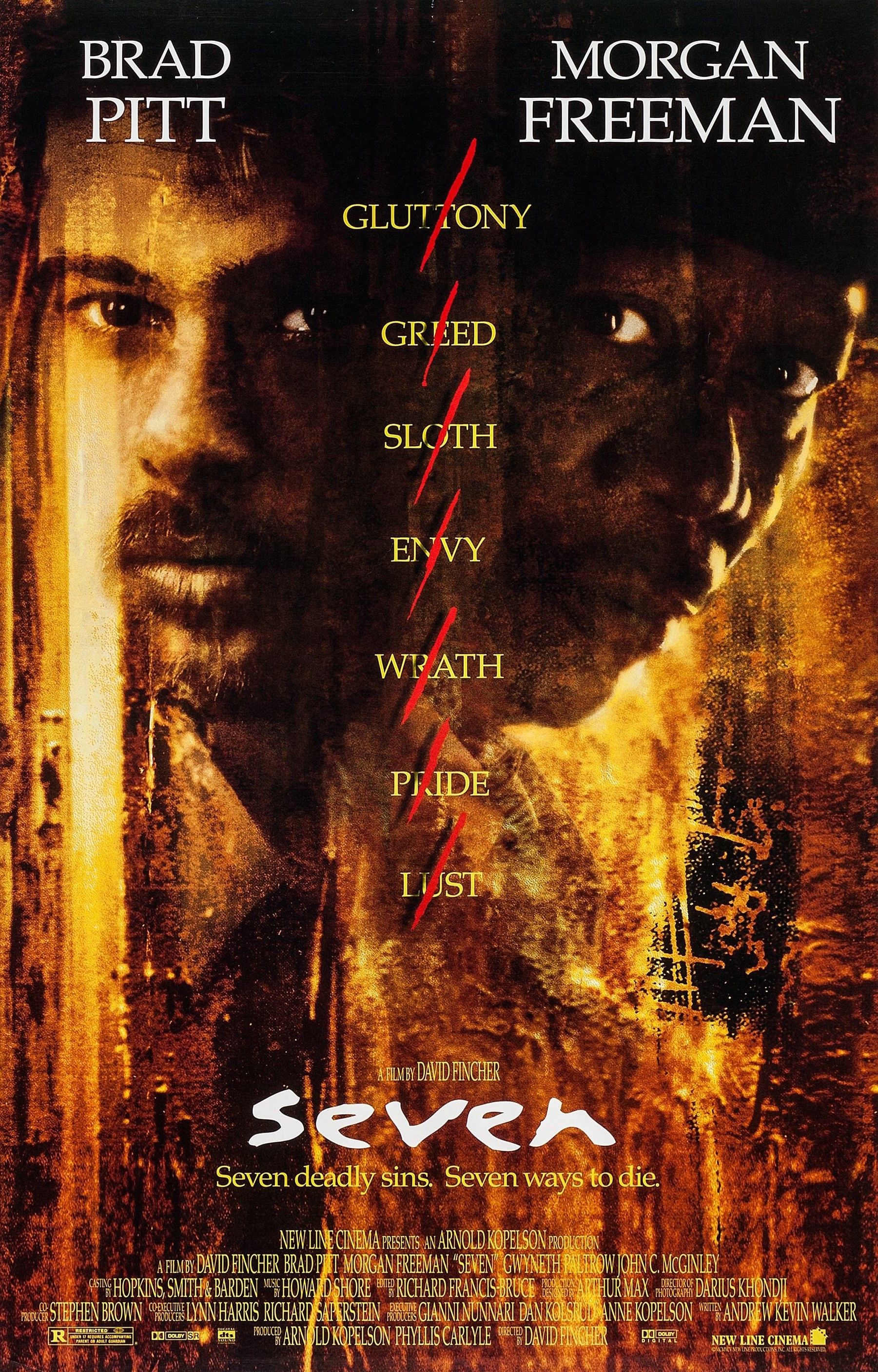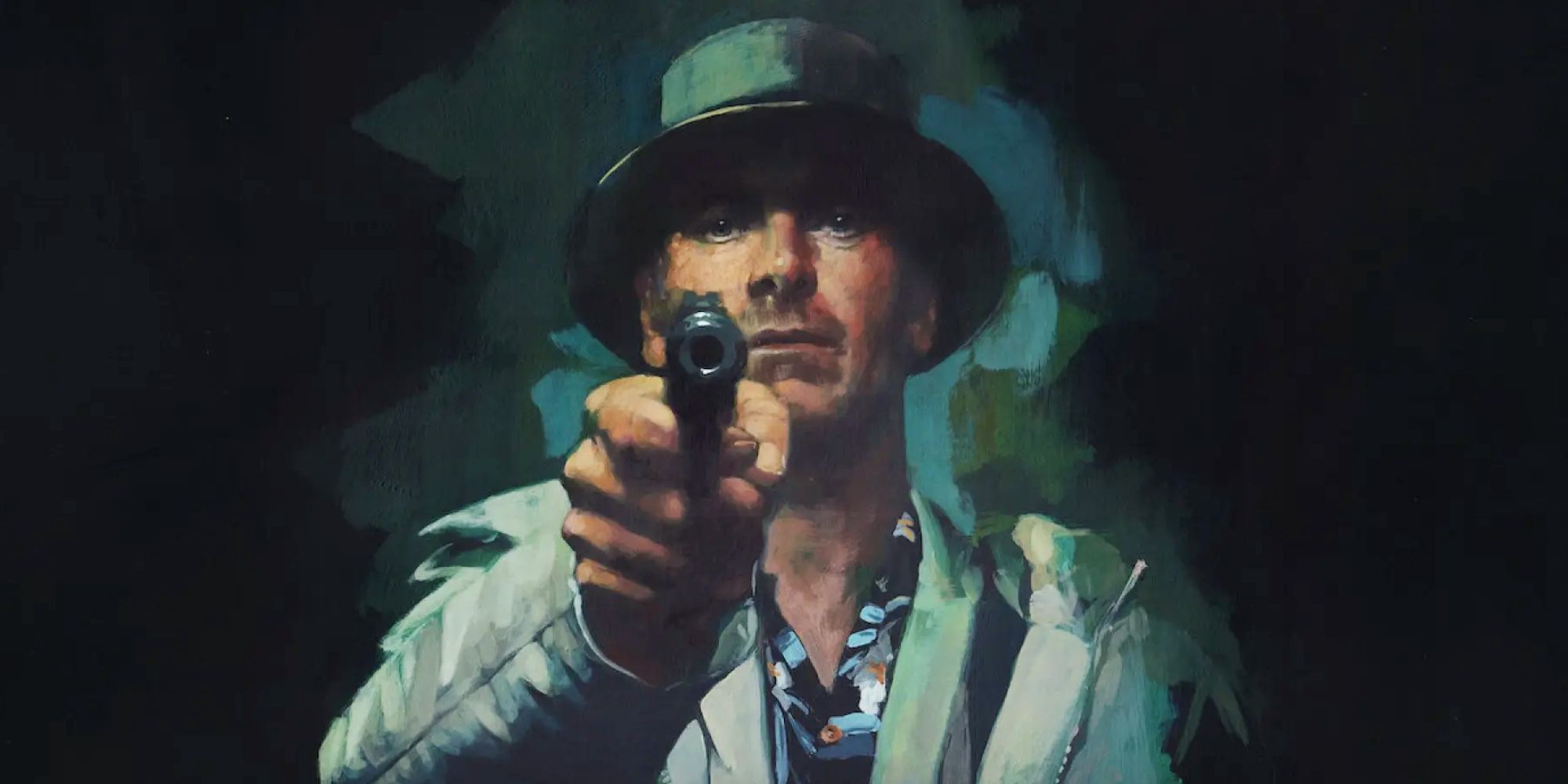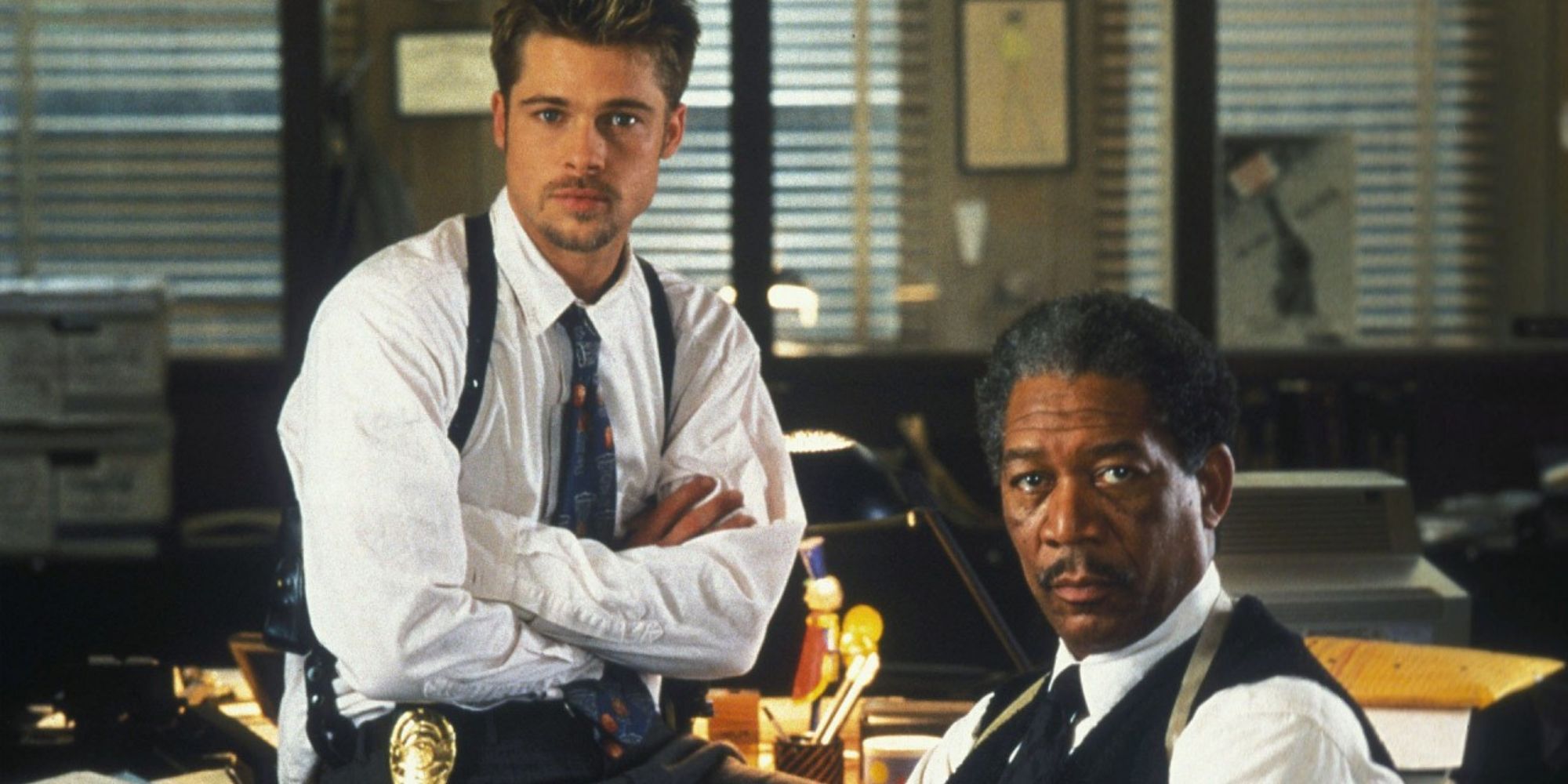The Big Picture
- David Fincher expertly uses the colors red and green throughout Seven to foreshadow the final sins and add depth to the characters.
- The use of color in Seven enhances the movie-watching experience and encourages viewers to solve the mystery along with the protagonists.
- The final twist in the movie reveals that John Doe represents envy, not Somerset, while Mills represents wrath, highlighting the significance of the sins and ultimately fulfilling John Doe's plan.
Anybody who’s seen a David Fincher film knows that the Oscar-nominated director uses visuals to his full advantage and does nothing by accident. In his 1995 thriller Seven, Detectives Mills (Brad Pitt) and Somerset (Morgan Freeman) work together to find the serial killer slaughtering his way through the city via manifestations of the seven deadly sins. As tensions mount and the victims keep piling up, we’re left wondering how the remaining sins will play out, and if our protagonists will be able to stop the murderer in time. However, through his use of the colors green and red throughout the film, Fincher shows us right away what the final — and most significant — sins will be, and even teases us that our jaded heroes might be the victims themselves. With Seven available to watch on Max, many are revisiting the Fincher classic or experiencing it for the first time. Either way, you may need a guide through Fincher's color palette in the movie.

Se7en
Two detectives, a rookie and a veteran, hunt a serial killer who uses the seven deadly sins as his motives.
- Release Date
- September 22, 1995
- Director
- David Fincher
- Cast
- Brad Pitt , Morgan Freeman , gwyneth paltrow , R. Lee Ermey , Daniel Zacapa
- Runtime
- 127 minutes
David Fincher Uses Color to His Artistic Advantage in 'Seven'
Within the first ten minutes of Seven, David Fincher gives the audience valuable insight into his lead characters and how they contrast with one another. In the opening scene in Somerset’s apartment, the analytical detective walks past a chess board and carries with him an air of wisdom, experience, and a sense of duty as he delicately adjusts his badge and picks lint off of neatly pressed clothes. A few minutes later, we get a scene of the young Mills waking up next to his wife, Tracy (Gwyneth Paltrow), in a messy, semi-moved-into apartment, painting a picture of youth, inexperience, and potential.

Every David Fincher Movie, Ranked by Intensity
The first rule of David Fincher is: You do not feel comfortable while watching a David Fincher film.Fincher also establishes his thoughtful use of color in the first few scenes of the movie. Somerset has a red lamp in his room, Mills drinks from a green mug, and on the street where the two discuss Mills’ move to the city, they walk past green buildings emblazoned with red address numbers. As we continue to watch, we can see how red and green are used in virtually every shot in Seven. More obvious examples come when Somerset walks through a library filled with green lamps, or when Mills explores a dark room and is bathed in harsh red light.
Like the colors red and green, Mills and Somerset are total opposites that complement each other, as we can later see when they work on the case together. Much like the use of Starbucks cups in Fincher’s other hit Fight Club, color becomes something to look out for and ponder its meaning, and when we learn that the murder mystery revolves around the seven deadly sins, we can make the natural connection between red and wrath, and green and envy. Once we notice this, the use of color becomes impossible to miss.
In 'Seven,' Red and Green Represent the Final Two Sins of Wrath and Envy
Just as the murderer, John Doe (Kevin Spacey), toys with the authorities who are trying to track him down, Fincher uses color to mess with us. He lets us know that wrath and envy are going to be the most important sins, but we’re not sure how these last kills are going to connect to our characters. While both detectives are surrounded by both colors, we’re inclined to think that Somerset represents envy and Mills represents wrath because of their storylines: Somerset envies Mills’ wife and future child, and recognizes the squandered potential he had to lead a different life, while Mills is rash and impulsive, growing increasingly angry with both John Doe’s crimes and Somerset’s conservative approach to solving them.
However, what we learn in Seven's final big reveal is that while both our leads are deeply affected by the final two sins, it is, in fact, John Doe who is envious and not Somerset. Doe finds his last victim in Mills’ wife, Tracy, giving us one of cinema history’s best twists and most iconic lines in one fell swoop - "What's in the box!?" (Spoiler alert — it's Tracy's severed head.) As much as Somerset tries to calm Mills down and dissuade him from giving Doe what he wants, upon realizing his wife is dead and furthermore, that she was pregnant, an understandably hysterical Mills fulfills the last step in Doe’s plan by unleashing his wrath and shooting Doe dead. By using green and red consistently throughout the movie, Fincher foreshadows how wrath and envy would be the final and most important sins of John Doe’s plan.
Overall, the most impressive part of Fincher’s use of color is that he didn’t need to do it. Seven is an expertly crafted thriller with a stellar cast and a killer script, and while the color adds to the movie-watching experience, noticing it isn’t integral to enjoying the film. Like most great movies, Seven gets better every time you watch it, and the prominent use of red and green only enhances the story as we can look for visual clues throughout. Through his use of color in Seven, Fincher crafts a movie that allows us to solve our own mystery as the characters solve theirs and ensures that none of us will ever look at a shipping box the same way again.
Seven is available to stream on Max in the U.S.

